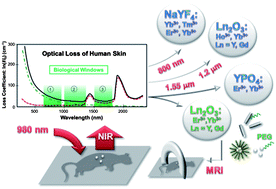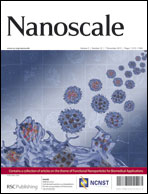In recent years, significant progress was achieved in the field of nanomedicine and bioimaging, but the development of new biomarkers for reliable detection of diseases at an early stage, molecular imaging, targeting and therapy remains crucial. The disadvantages of commonly used organic dyes include photobleaching, autofluorescence, phototoxicity and scattering when UV (ultraviolet) or visible light is used for excitation. The limited penetration depth of the excitation light and the visible emission into and from the biological tissue is a further drawback with regard to in vivo bioimaging. Lanthanide containing inorganic nanostructures emitting in the near-infrared (NIR) range under NIR excitation may overcome those problems. Due to the outstanding optical and magnetic properties of lanthanide ions (Ln3+), nanoscopic host materials doped with Ln3+, e.g. Y2O3:Er3+,Yb3+, are promising candidates for NIR–NIR bioimaging. Ln3+-doped gadolinium-based inorganic nanostructures, such as Gd2O3:Er3+,Yb3+, have a high potential as opto-magnetic markers allowing the combination of time-resolved optical imaging and magnetic resonance imaging (MRI) of high spatial resolution. Recent progress in our research on over-1000 nm NIR fluorescent nanoprobes for in vivo NIR–NIR bioimaging will be discussed in this review.

You have access to this article
 Please wait while we load your content...
Something went wrong. Try again?
Please wait while we load your content...
Something went wrong. Try again?


 Please wait while we load your content...
Please wait while we load your content...